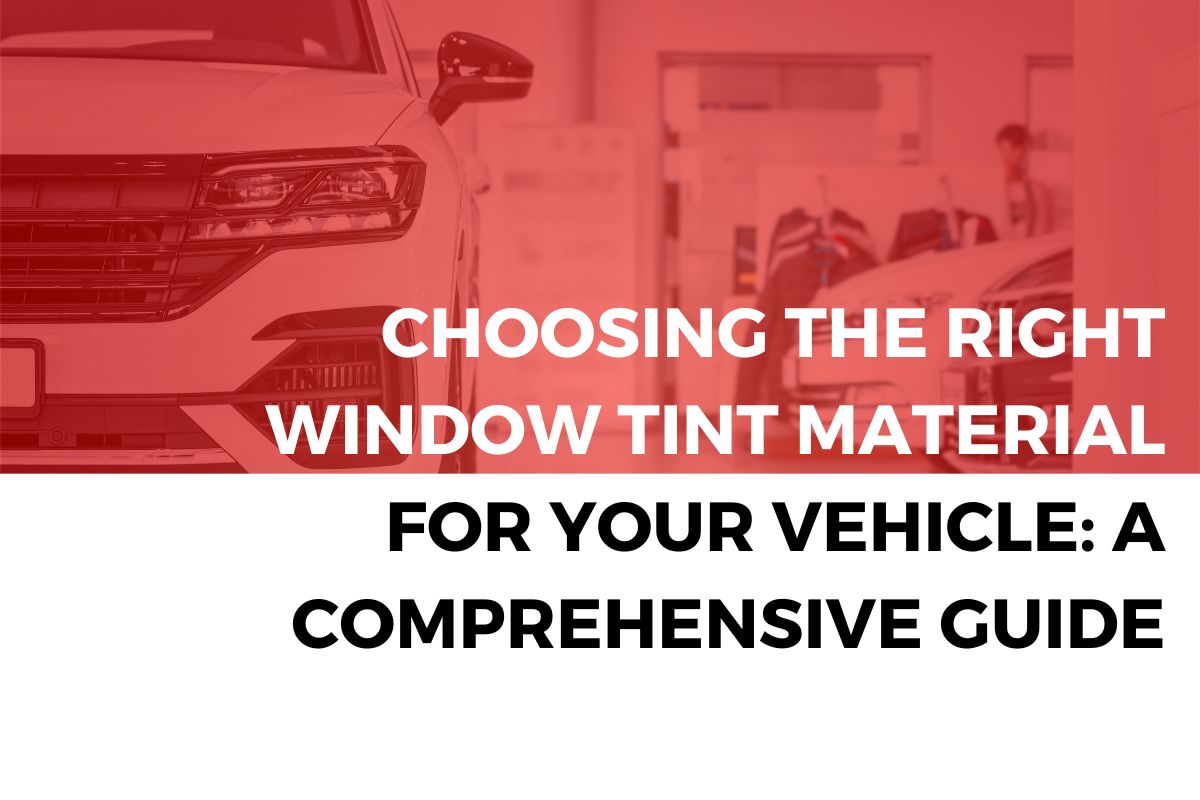Car window tinting has become a ubiquitous feature in the automotive industry. It not only adds a touch of style to your vehicle but also serves practical purposes, such as enhancing privacy, providing UV protection, and reducing heat. In this guide, we will explore the world of car window tint materials and help you understand the significance of selecting the right one for your vehicle.
Why Window Tint Matters
Choosing the appropriate window tint material is crucial. It can affect the aesthetics, functionality, and longevity of your tint. Let’s delve into what makes car window tint so important and explore the various options available.
Understanding Car Window Tint
What is a Car Window Tint?
Car window tint is a thin, multi-layered film that is applied to the interior of your vehicle’s windows. It offers numerous benefits, including increased privacy, protection against UV rays, and heat reduction. Understanding the basics of window tint is the first step toward making an informed choice.
Various Types of Window Tint Materials
There is a wide variety of window tint materials available on the market, each with its own set of characteristics and advantages. We’ll explore the most common types and help you understand their differences.
Factors to Consider
When selecting a window tint material, several factors should be considered, including local regulations, the desired tint level, UV protection, and heat reduction. We’ll delve into each of these factors to help you make an informed decision.
Types of Window Tint Materials
Dyed Window Tint
Dyed window tint works by absorbing and dispersing heat.
Advantages include affordability and decent glare reduction, but it may fade over time.
Metalized Window Tint
Metalized window tint contains tiny metallic particles that reflect heat.
Advantages include excellent heat rejection and added strength, but it can interfere with electronic signals.
Carbon Window Tint
Carbon window tint utilizes carbon particles to absorb heat.
Advantages include good heat rejection and longevity, with minimal interference with electronics.
D. Ceramic Window Tint
Ceramic window tint is made of non-conductive ceramic particles.
Advantages include high heat rejection, excellent UV protection, and no electronic interference.
Choosing the Ideal Window Tint Material for Your Vehicle
Consider the climate and weather conditions in your area when choosing the right tint material.
Determine your personal preferences, such as the level of privacy and aesthetic appeal.
Consulting with a professional window tint installer can provide valuable insights.
Reading customer reviews and experiences can help you learn from others’ choices and mistakes.
Maintaining and Caring for Your Window Tint
Proper maintenance includes cleaning with a mild solution and avoiding sharp objects that could scratch the tint.
Common mistakes to avoid include using abrasive cleaners or rolling down the windows too soon after installation.
Regular inspection and repair of damaged or peeling tint can extend its lifespan and effectiveness.
Read More:- Shading Your Ride: Exploring the Top Car Window Tint Shades for Your Vehicle
Conclusion
In conclusion, the choice of window tint material for your vehicle is a decision that should not be taken lightly. It influences not only the aesthetics of your car but also its functionality and durability.





